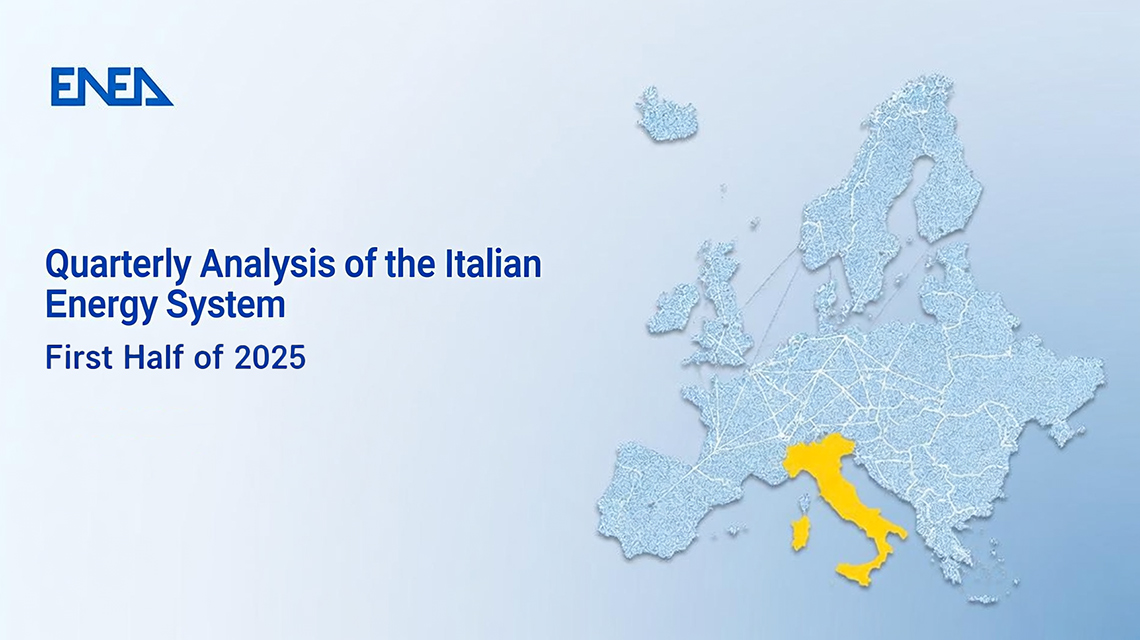Italian National Agency for New Technologies, Energy and Sustainable Economic Development

Energy: Emissions increase despite flat energy consumption in first half 2025
Among renewables, only solar expands. Euro area moves further away from 2030 goals
After two and a half years of decline, CO₂ emissions in Italy rose again in the first half of 2025 (+1.3%), despite overall energy consumption remaining broadly stable (natural gas +6%, oil -2%, renewables -3%). This is one of the key findings of ENEA’s Quarterly Analysis of the Italian Energy System, which also highlights that electricity and gas prices remain among the highest in Europe and that the country’s energy transition is on a worsening trajectory, with the ISPRED index down by 25% year-on-year.
In the Italian market, average electricity prices (€120/MWh in the first half of 2025) were almost double those in Spain (€62/MWh) and France (€67/MWh). “This is weighing heavily on energy-intensive industries, whose production remains more than 10% below that of the overall manufacturing sector, itself already at long-term lows,” explains Francesco Gracceva, who coordinates the ENEA analysis.
Between January and June, renewable electricity generation fell sharply, with hydro (-20%) and wind (-12%) declines not offset by solar power (+23%), which continued to expand in line with new installed capacity (+3.3 GW). Higher gas demand was driven by the colder weather in early 2025, which boosted heating consumption.
A similar trend was seen across the euro area: gas consumption increased (+5%) due to the harsh winter, while renewables declined (-3%), with only solar growing strongly (+20%). Nuclear output also rose (+2%), reflecting higher French production. “Overall, energy consumption in the euro area is estimated to have remained stable, as have CO₂ emissions—clearly at odds with the 2030 target, which requires an average annual reduction of around 7%,” Gracceva notes.
In Italy, energy demand fell in transport (-1%, concentrated in Q1) but rose in the residential sector (+3%), driven by higher gas consumption for heating and stronger electricity demand in the tertiary sector. Overall, electricity demand increased only marginally (+0.4%), confirming the essentially stagnant pace of electrification in final consumption.
The deterioration of the ENEA ISPRED index is mainly due to the decarbonization dimension. “Over the next five years, CO₂ emissions will need to fall by around 6% annually, nearly double the pace observed over the past three years. At this rate, the 2030 target would not be achieved before 2035,” Gracceva warns.
On the energy security front, the gas system proved robust, supported by the commissioning of the new Ravenna LNG terminal, which in May and June made liquefied natural gas the country’s largest source of supply (35% of total), overtaking Algerian imports.
Meanwhile, in European electricity markets, zero or negative wholesale prices are occurring for an increasing share of hours—peaking in Spain at over six hours per day on average, reflecting excess generation from intermittent renewables, especially solar, and insufficient flexibility. “These dynamics are far less pronounced in Italy, where zero prices occurred in just 0.5% of hours in the South, underscoring the continuing central role of gas in setting wholesale prices”, Gracceva concludes.
